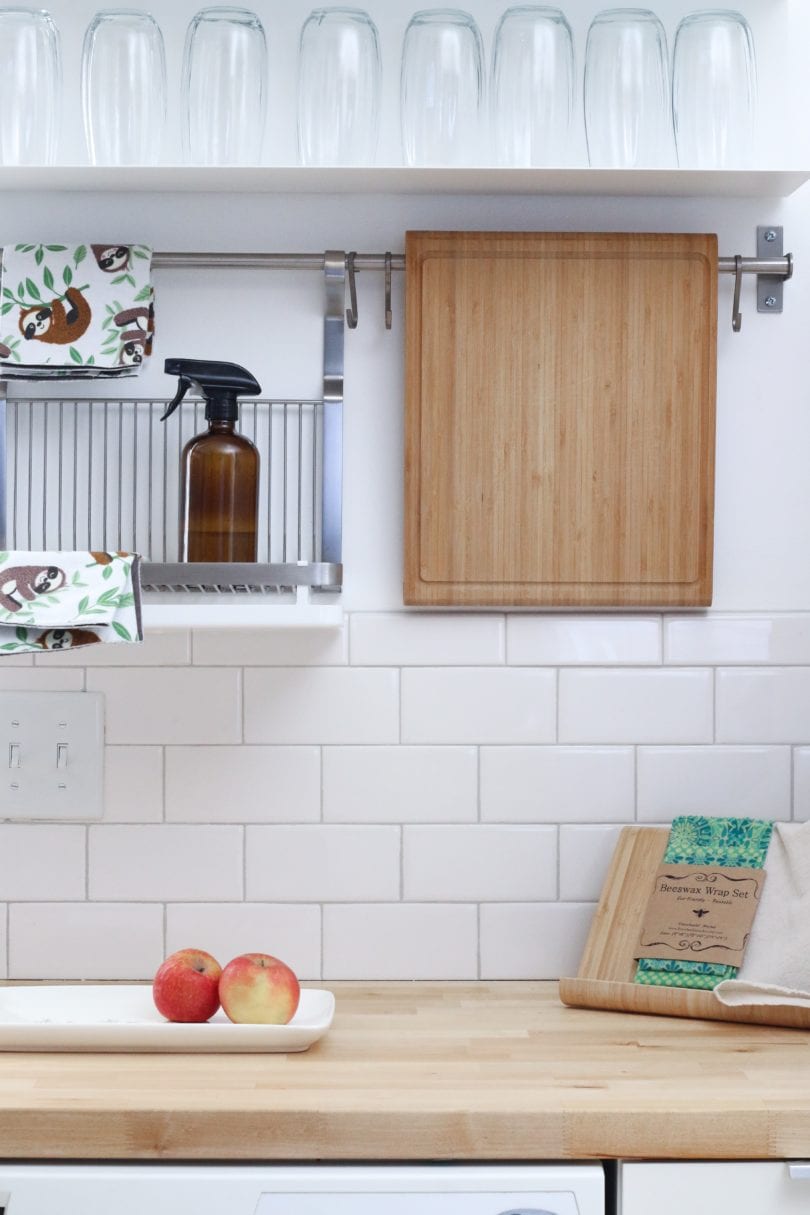You’ve been doing your research about making your daily life more ecologically friendly — or “eco” if you will. You pack your reusable grocery bags, you reduce-reuse-recycle, so what’s the next step? Making some simple shifts in your kitchen, from the products you purchase to the products you avoid, can take your kitchen from green-ish to a truly sustainable space in your home. Here are our top tips for how to make your kitchen eco-friendly.
Cut out the toxic chemicals
If you read the fine print on many of the bottles living under your kitchen sink, you will probably be disturbed by the disclaimers and warnings they contain because of their toxic or hazardous contents. Ditch the bottles of chemical disinfectants, “be sure to ventilate properly” oven cleaners, and dish soaps that contain petroleum-based surfactants. There are eco-friendly kitchen products that will do all of these things! Search out an eco-friendly kitchen cleaner with ingredients like vinegar, thyme oil (or thymol), tea tree oil, and plant-based surfactants – these often come from coconuts. Plain old white vinegar works well for a lot of cleaning, including tile or linoleum floors as well as windows. And the best eco-friendly kitchen trash bags are free of chemical fragrances (phew)! They are usually made of recycled plastic or even biodegradable materials.

Go reusable… everything
We’ve covered the grocery bags, but it’s time to also invest in reusable items for your regular kitchen use. Eliminate single-use items by finding these eco-friendly kitchen accessories:
- Instead of purchasing (and throwing away) plastic sponges, buy a dish brush with plant-based bristles for your scrubbing needs. These can be washed with hot water and soap to keep them from getting grimy. A metal scouring pad will take care of any last stuck-on food.
- Glass containers with snap tops, jars, and waxed fabric or silicon sandwich “baggies” will last a long, long time. They also waste zero plastic, compared to your usual single-use sandwich bags and leftover containers.
- Use cloth towels instead of paper towels. They are easy to wash and, if you are a messy chef, you can buy off-white towels that can be washed with a natural bleach alternative to keep them cleaner.
- Instead of using disposable coffee filters, switch to a reusable/washable basket — or use a French press or stovetop Moka pot.

Install a water filter and quit the bottle habit
Every eco-friendly kitchen removes the necessity of purchasing bottled water. Yes, you might live in a city with gross-tasting water, but there are quality water filters for that. It’s an up-front investment, but you’ll save money in the long run and ensure that you have quality drinking water coming right out of your tap. Quit the bottle habit and bring your own water with you wherever you go.
Remodel green
Eventually, things in your kitchen will need to be replaced. So why not make a commitment to an eco-friendly kitchen remodel? Opt for energy-efficient appliances that use less electricity and less water in the case of the dishwasher. Investigate options for eco-friendly flooring for kitchens. Recycled plastic laminate flooring, for example, or chemical-free tile will be durable and easy to clean with your new eco-friendly kitchen cleaning products — or even just with vinegar. Consider not buying some of the more extraneous kitchen gadgets you can live without. Decrease the baseline of energy and water used, and you’re well set up for an eco-friendly kitchen.
If you’re moving to a new home and pondering how to make your new kitchen eco-friendly, should you bring your old appliances or leave them behind? Take a look at these tips on whether to sell or ship your appliances when you move. And as always, do your best to skip the styrofoam and use green alternatives when packing!








